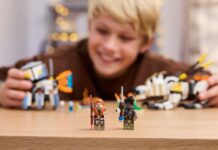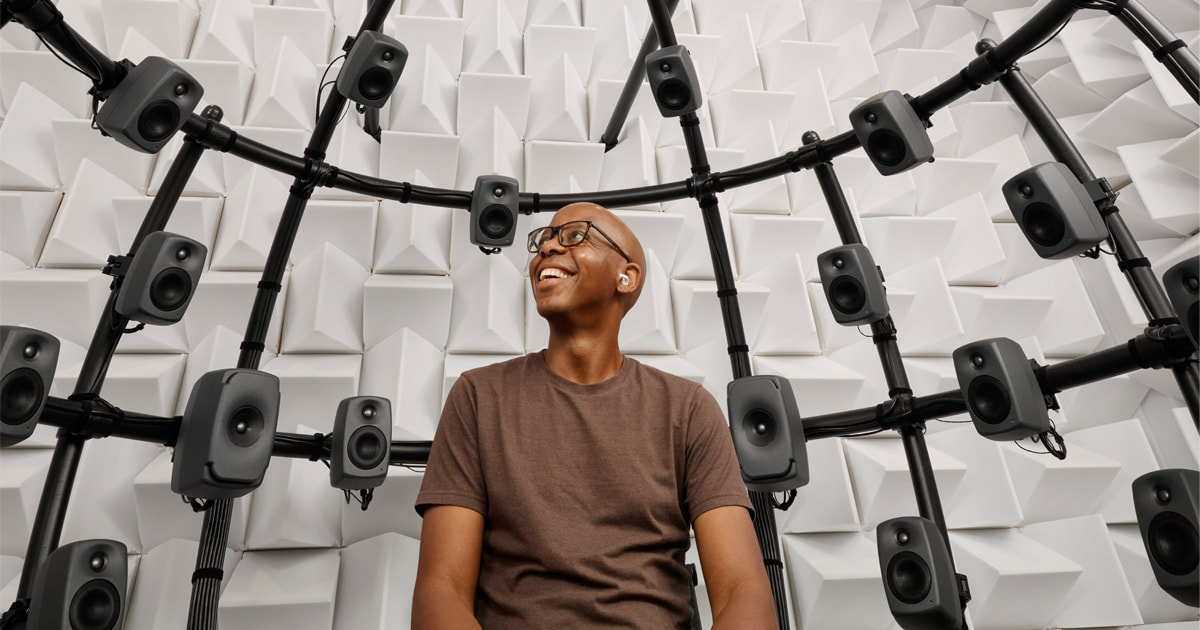Inside Apple’s Audio Lab: Pioneering the Future of Hearing Health
In an era where technology continuously reshapes our lives, Apple stands at the forefront, consistently pushing boundaries with innovative solutions. One of its latest breakthroughs is the world’s first comprehensive hearing health experience, developed at Apple’s cutting-edge Audio Lab in Cupertino, California. This facility has become a crucial center for the company’s acoustic engineers, who delve into user studies and test groundbreaking features in soundproof environments.
A Hub of Innovation and Collaboration
The Audio Lab is more than just a testing ground; it is the nerve center for the intricate process of designing, measuring, tuning, and validating every Apple product equipped with speakers or microphones. It’s here that Apple’s teams have poured years of effort into developing revolutionary hearing health features for the AirPods Pro 2. These features are now available as a free software update, offering a holistic experience designed to safeguard users against loud environmental noise through Hearing Protection, conduct at-home Hearing Tests, and use AirPods Pro as clinical-grade Hearing Aids for those with mild to moderate hearing loss.
According to the World Health Organization, approximately 1.5 billion people globally live with hearing loss. Dr. Shelly Chadha, WHO’s technical lead for hearing, emphasizes the significance of this health issue, stating that hearing is crucial for communication and overall wellbeing. Technology, she notes, can be pivotal in raising awareness and providing solutions for those affected by hearing loss.
Personalized Hearing Solutions
Apple’s approach to this problem is rooted in personalization. Dr. Sumbul Desai, Apple’s Vice President of Health, explains that every individual’s hearing is unique. This understanding drove the creation of a user-friendly, adaptable hearing health experience. The objective was to develop a feature so intuitive that it seamlessly integrates with users’ senses, potentially transforming lives by democratizing access to hearing loss treatment.
Apple’s engineers leveraged specialized spaces within the Audio Lab to bring these innovative features to life. Kuba Mazur, Apple’s lead engineer for hearing health within Acoustics Engineering, highlights the lab’s capabilities, from testing the faintest sounds for the Hearing Test feature to simulating the din of a noisy restaurant for the Hearing Aid feature. The lab can even replicate concert-level noise for Hearing Protection. This is achieved by replaying calibrated soundscapes from around the world or by taking precise acoustic measurements with the push of a button.
Advanced Acoustic Testing
The Longwave anechoic chamber, a standout feature of the lab, is built on a separate foundation with springs isolating it from the rest of the facility. This design eliminates noise and vibration disturbances during sound measurements. It houses a specially designed loudspeaker and microphone array to assess how sound interacts with the human body. This chamber is instrumental in developing products like AirPods, iPhones, and HomePods.
Mazur explains that ears naturally amplify sound, each uniquely shaped and often asymmetrical. When sound reaches one ear before the other, it creates a time difference in perception. Understanding this phenomenon is crucial for creating experiences that accurately reflect real-world sounds. In the anechoic chambers, engineers have participants sit in a rotating chair with AirPods Pro to capture audio data.
Real-World Sound Simulation
On the other side of the lab, the Fantasia Lab employs a spherical array of 50 loudspeakers to simulate hundreds of real-world soundscapes, such as bustling malls, crowded streets, or airplane cabins. This controlled environment is vital for fine-tuning and validating the Hearing Aid feature. Participants with varying hearing levels are exposed to complex sound scenes, like a noisy restaurant, and asked to repeat the words of a single speaker amid background chatter.
Mazur emphasizes the lab’s role in recreating everyday experiences to ensure new features meet user needs. By bringing the outside world into the lab, engineers can refine features like the Hearing Aid, Conversation Boost, and Transparency mode.
Clinical-Grade Testing
Additionally, the Audio Lab houses three clinical-grade audiometric booths, similar to those found in audiologists’ offices. These booths are used for internal testing, where Apple’s engineering team collaborates with audiologists to conduct thousands of clinical-grade audiometry tests. These tests precede the clinical validation studies for the new Hearing Test feature.
Design plays a pivotal role in user experience, especially for the new hearing features. The team focused on simplifying the Hearing Test and Hearing Aid setup, ensuring it was more understandable than the typical numerical results given during a doctor’s visit. Heather Daniel, a producer in Apple’s Design Studio, underscores the importance of clarity in health features. For many users, this might be their first hearing test, so the process needed to be as seamless as possible.
A Collaborative Effort
Creating these experiences involved collaboration across Apple, with teams working together to build software that meets clinical testing requirements and delivers a top-tier product to customers. Mazur reflects on the innovation, technological density, and meticulous attention to detail that went into creating these complex software features. Teams from software and hardware engineering, design, health, accessibility, clinical operations, regulatory, and human factors engineering all contributed to ensuring the best quality and experience.
The comprehensive hearing health experience on AirPods Pro 2 exemplifies Apple’s dedication to supporting users on their health journeys. For many team members, it represents the potential of innovation driven by passion to develop useful products and software that enhance daily life.
Mazur concludes by highlighting the transformative impact of these features. With AirPods, users can protect their hearing at concerts and gain insights into their hearing health over time. AirPods have become an integral interface to the ear, adapting to each individual’s needs.
For more information about the availability of these features, visit apple.com.
For more Information, Refer to this article.



































